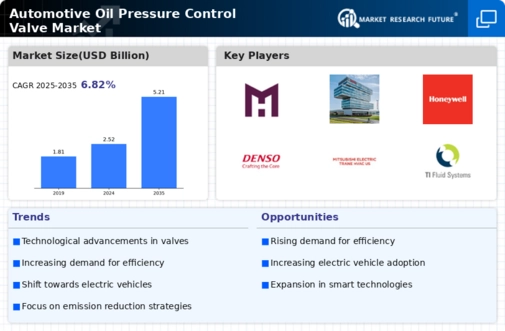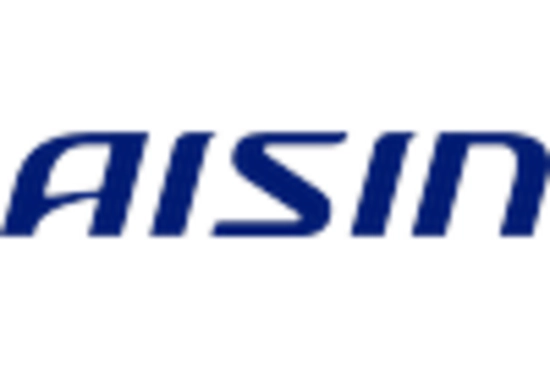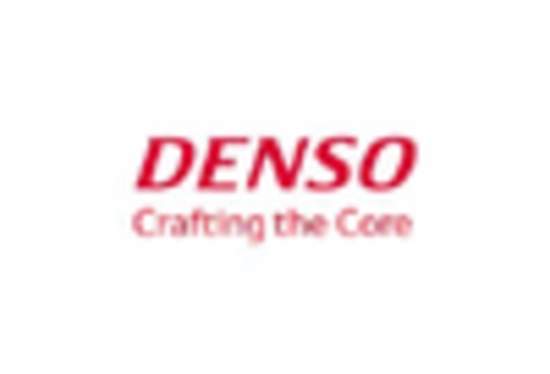North America : Automotive Innovation Leader
North America is the largest market for automotive oil pressure control valves, holding approximately 40% of the global market share. The region's growth is driven by increasing vehicle production, stringent emission regulations, and a shift towards electric vehicles. The demand for advanced automotive technologies and fuel-efficient systems further propels market expansion. Regulatory catalysts, such as the Corporate Average Fuel Economy (CAFE) standards, are also influencing market dynamics.
The United States is the leading country in this region, with significant contributions from Canada and Mexico. Major players like Bosch, Honeywell, and Delphi Technologies dominate the competitive landscape, focusing on innovation and technological advancements. The presence of established automotive manufacturers and a robust supply chain enhances the market's growth potential, making North America a key player in the automotive sector.
Europe : Regulatory-Driven Market
Europe is the second-largest market for automotive oil pressure control valves, accounting for approximately 30% of the global market share. The region's growth is fueled by stringent environmental regulations, such as the European Union's CO2 emission targets, which drive demand for efficient automotive components. The increasing focus on sustainability and the transition to electric vehicles are also significant growth drivers, creating a favorable environment for market expansion.
Germany, France, and the UK are the leading countries in this market, with Germany being the largest contributor. Key players like Valeo, Schaeffler, and Continental are actively involved in developing innovative solutions to meet regulatory requirements. The competitive landscape is characterized by a mix of established companies and emerging players, all striving to enhance their market presence through technological advancements and strategic partnerships.
Asia-Pacific : Emerging Market Potential
Asia-Pacific is witnessing rapid growth in the automotive oil pressure control valve market, holding approximately 25% of the global market share. The region's expansion is driven by increasing vehicle production, rising disposable incomes, and a growing middle class. Additionally, government initiatives to promote electric vehicles and improve fuel efficiency are significant catalysts for market growth. Countries like China and India are at the forefront of this transformation, contributing to the region's dynamic market landscape.
China is the largest market in Asia-Pacific, followed by Japan and India. The competitive landscape features key players such as Denso, Aisin Seiki, and Magneti Marelli, who are focusing on innovation and technological advancements. The presence of a robust automotive manufacturing base and increasing investments in research and development further enhance the region's market potential, making it a critical area for future growth in the automotive sector.
Middle East and Africa : Resource-Rich Opportunities
The Middle East and Africa (MEA) region is gradually emerging in the automotive oil pressure control valve market, holding about 5% of the global market share. The growth in this region is primarily driven by increasing vehicle ownership, urbanization, and government initiatives to enhance transportation infrastructure. Additionally, the rising demand for fuel-efficient vehicles is propelling market growth, as consumers seek to reduce operational costs in a fluctuating economic environment.
Countries like South Africa and the UAE are leading the market in this region, with a growing presence of automotive manufacturers and suppliers. The competitive landscape is characterized by a mix of local and international players, including companies like Honeywell and Valeo. As the region continues to develop its automotive sector, opportunities for growth and investment are expected to increase, making MEA a potential market for automotive innovations.

















Leave a Comment